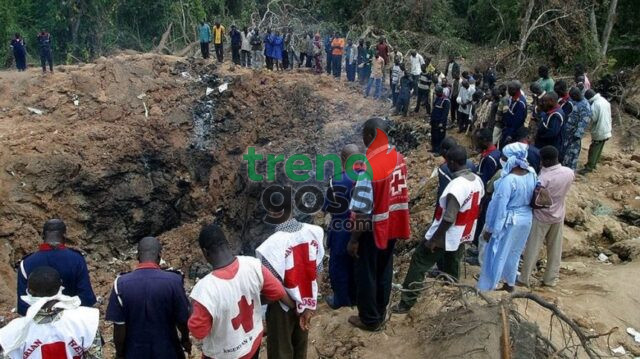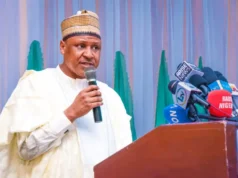Two decades after the Bellview Airlines crash that claimed 117 lives, the once-revered Lisa Memorial Arcade in Ifo Local Government Area of Ogun State now lies in ruins — forgotten, overgrown, and abandoned.
On October 22, 2005, a Boeing 737-200 aircraft operated by Bellview Airlines crashed into Lisa Village shortly after takeoff from Murtala Muhammed International Airport, Lagos, en route to Abuja, killing all 111 passengers and six crew members on board.
Among the victims were Mallam Argungu Abubakar, former Postmaster General of Nigeria; Mr. Omang Ojang, Director of Research and Documentation, Nigerian Press Council; Mr. Emmanuel Quaye, ECOWAS Director of Finance; Mrs. Maria Sokenu, former Managing Director of the defunct Peoples Bank; and Usman Umar, the traditional ruler of Daddare and Chairman, Board of the National Programme on Immunisation.
The government later built a memorial arcade and garden — the Lisa Memorial Arcade — where the victims’ remains were interred. It once stood as a symbol of remembrance and unity.
However, twenty years later, the site tells a story of decay and abandonment. The 10.5-kilometre access road from Ijoko has become impassable, with the entire area now overrun by bushes and erosion.
The traditional ruler of Lisa, Oba Oladele Najeem Odugbemi (Ayelodun I), lamented the neglect, blaming poor road construction for the site’s decline.
“The contractor who handled that road project from Ijoko to the crash site, which is 10.5 km, did not do a good job. We only enjoyed that road for six months,” the monarch said.
He praised former President Olusegun Obasanjo for establishing the memorial but bemoaned its current state.
“The arcade is now completely dilapidated. You can’t see anything there other than bushes. The road has become a death trap. People who built houses here have left because of the terrible condition.”
Oba Odugbemi said the arcade once attracted tourists and school excursions but has lost its glory.
“At first, many schools and families came to visit. Some even travelled from as far as Benue and the North. White people came too. But that stopped 14–15 years ago,” he said.






